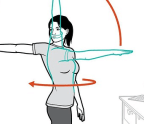
When I was young and restless, my Pappy often said to me, “Rules are rules.” Of course, this was usually preceded by my breaking of said rules. As I got a little older and life (and Pappy’s hair) developed more gray areas, he softened his stance a bit. “Rules are rules, but some rules are meant to be broken.”
Having lived with diabetes for more than 36 years and taught thousands of patients through my diabetes practice, I’ve discovered plenty of rules that are just begging to be broken. One that truly stands out is the “Rule of 15”—that standard procedure for treating hypoglycemia (low blood sugar) with exactly 15 grams (g) of carbohydrate and then waiting 15 minutes to see if it worked. While this may provide a nice, easy-to-remember starting point for those who are recently diagnosed and overwhelmed with new information, it rarely works in real-life situations. Given the importance of proper recovery, the way we treat hypoglycemia needs to be customized to the individual … and the situation.
Why is this so important?
Everyone who takes insulin or medications that cause the pancreas to secrete more insulin (sulfonylureas [e.g., glyburide, glipizide, and glimepiride] and meglitinides [e.g., repaglinide, nateglinide]) is at






